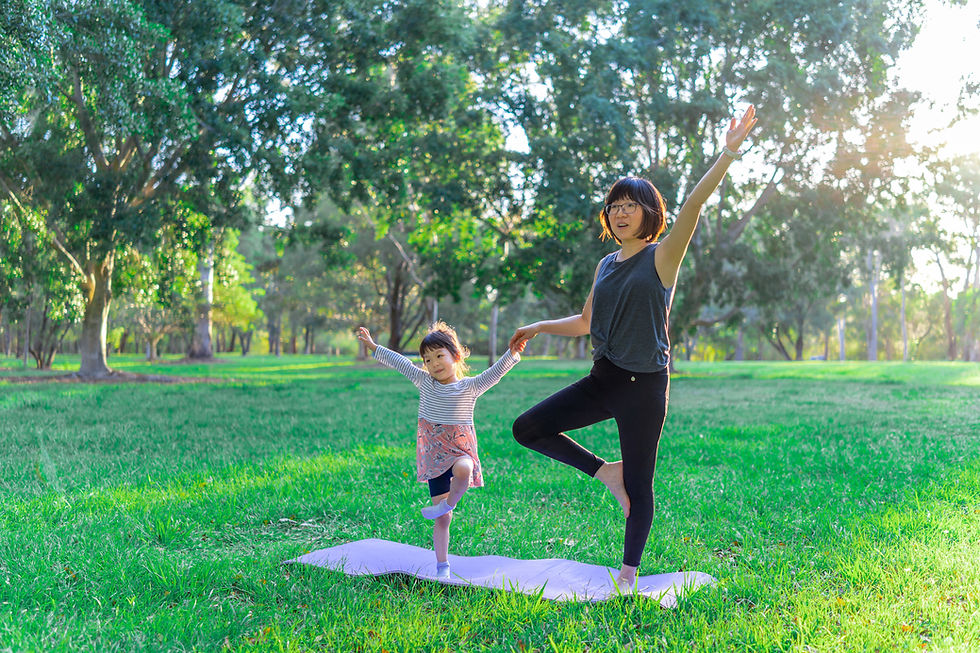Hydration and Joint Health: Are You Drinking Enough Water?
- Melanie Wintle
- Apr 13
- 4 min read
Updated: Apr 14

Did you know, if you’re feeling thirsty, you’re already dehydrated. Unlike hunger, where your body can handle a bit of delay, thirst is a late-stage signal. And when it comes to your joint health, waiting for that dry-mouth moment means you’ve already missed the hydration window your body actually needed.
You’ve probably heard the stat that the human body is around 60% water. But your joints take that number up a notch.
Cartilage, the shock-absorbing tissue that cushions your joints, is about 70–80% water. On top of that, your body produces synovial fluid, a thick, slippery substance that lubricates and protects your joints so your bones can glide smoothly rather than grind against each other. But none of that works well without adequate hydration. When you’re even mildly dehydrated, your joints can feel stiffer, less cushioned, and more prone to pain, especially first thing in the morning or after a long stretch of sitting.
Why Hydration Matters for Joint Health
Every day, you lose water through your breath, perspiration, urine, and bowel movements. For your body to function properly, including your joints, you need to replenish that fluid.
Hydration helps:
Keep cartilage supple so it can absorb shock and reduce friction between bones
Support synovial fluid production, which allows your joints to glide easily
Improve circulation so nutrients can reach joint tissues
Flush out toxins and reduce inflammation that may worsen joint pain
Even mild dehydration can increase joint stiffness, especially in people already dealing with arthritis or joint injuries. If you wake up sore, or stiffen up after sitting for too long, low hydration could be playing a bigger role than you realize.
How Much Water Do You Really Need?
According to the U.S. National Academies of Sciences, Engineering, and Medicine (and supported by healthcare organizations like BJC HealthCare):
Women should aim for about 2.7 L (11.5 cups) per day
Men should aim for about 3.7 L (15.5 cups) of fluids daily
This includes water, other beverages, and food (about 20% of daily fluid intake typically comes from food).
Your actual needs may vary depending on your activity level, age, body size, climate, and medications. For example, if you're sweating more from exercise or hot weather, or if you're taking diuretics or drinking alcohol, you'll need to replenish fluids more frequently.
Tips to Make Hydration Easier (and More Habitual)
2–3 litres sounds like a lot, don’t stress, here are some simple, practical ways to make it part of your daily rhythm:
Start and end your day with water – Drink 250–500 ml (1–2 cups) of water within 30 minutes of waking up and again before bed. This helps replenish fluids lost overnight and primes your joints for movement.
Add some flavour – If plain water isn’t your thing, try adding lemon, cucumber, mint, or berries. Herbal teas, infused water, and broths can all count toward your intake.
Pair hydration with routines – Link water with habits you already do, like drinking a glass before each meal or keeping a water bottle handy during phone calls, while cooking, or when you sit down to work.
Use reminders – Set a timer or use a hydration app to stay consistent, especially during busy days when it’s easy to forget.
What About Joint Pain or Arthritis?
If you live with arthritis or chronic joint pain, dehydration can make things worse. Without enough water, your joints are less protected, which may increase friction and discomfort.
Even mild dehydration can make joint symptoms feel more intense, especially in older adults whose thirst response can sometimes be reduced. Taking in enough water can help reduce stiffness, support joint padding, and even improve the effectiveness of other strategies like exercise, nutrition, and mobility work.
Small Habit, Big Impact
Small changes add up. Hydration is one of the easiest and most overlooked tools in your joint health toolkit. It might seem like a small thing, but it’s a foundational piece of joint health. It supports your cartilage, keeps your joints moving more freely, and helps your entire body function better.
If you’re trying to reduce joint pain, stiffness, or inflammation, start with water. Build it into your routine and track it for a week. You might be surprised how much better your body feels when your joints are getting what they need.
If you’re ready to make joint-friendly hydration (and other supportive habits) part of your daily routine, I’ve created something just for you: Click here to get my free 5-Day Joint-Loving Habits Mini Guide, it’s packed with simple, science-backed strategies to reduce stiffness, improve mobility, and build a foundation for joint health that lasts.
You’ll also get a printable habit tracker so you can celebrate your wins and stay on track.
Want more tips on movement, injury prevention, and staying active as you age? Sign up for my monthly Move Well Newsletter and get evidence-based advice straight to your inbox.
References:
National Academies of Sciences, Engineering, and Medicine. (2004). Dietary reference intakes for water, potassium, sodium, chloride, and sulfate. The National Academies Press. https://doi.org/10.17226/10925
Mayo Clinic. (2020, April 3). Water: How much should you drink every day? Mayo Clinic. https://www.mayoclinic.org/healthy-lifestyle/nutrition-and-healthy-eating/expert-answers/water/faq-20058550
BJC HealthCare. (2021). How much water do I need? BJC HealthCare. https://www.bjc.org/news/how-much-water-do-i-need-guide-staying-hydrated
Disclaimer:
This site offers health, fitness and nutritional information and is designed for educational purposes only. You should not rely on this information as a substitute for, nor does it replace, professional medical advice, diagnosis, or treatment. If you have any concerns or questions about your health, you should always consult with a physician or other health-care professional. Do not disregard, avoid or delay obtaining medical or health related advice from your health-care professional because of something you may have read on this site. The use of any information provided on this site is solely at your own risk.
.png)



Opmerkingen